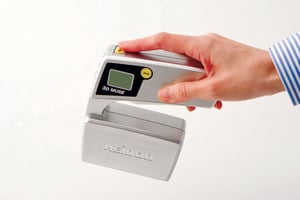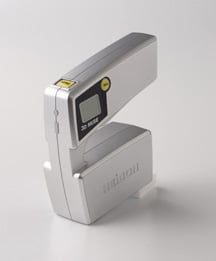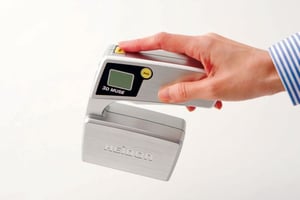 Is friction a factor of physics or chemistry?
Is friction a factor of physics or chemistry?
In short? It can be both.
Scientists, engineers, and science-backed product developers know that the world of physics and chemistry are closely linked. Therefore the discussion of whether friction is more about physics or chemistry is much more nuanced than choosing one or the other—which means the friction and chemistry of a product or substance can influence the other as well.
Here’s a quick look at how friction and chemistry go hand in hand, what it means for the real world, and finding tools to help test and track friction and its role in a product’s development.
About Friction and Chemistry
To understand how friction and chemistry go hand in hand, it’s first important to understand the role that friction plays in the relationship. Phys Org explains, “Friction occurs at the interface between any two solid surfaces in contact and moving at different speeds or directions,” continuing to say, “Since friction can correspond to waste energy, scientists use the parameter to determine the efficiency and useful lifetime of all moving systems from biological to the aeronautical.”
The online publication then goes on to share that frictional force is most often directly, linearly proportional to its applied load. The proportion of the relationship between these two surfaces is known as the coefficient of friction.
So, how does friction impact chemistry and chemical bonds? Science and chemistry lessons for young students start to introduce this concept, giving one particular example of rubbing one’s hands together. While this process creates friction as the surface of each palm rubs against the other, it also is an example of chemistry; the molecules move faster, raising the temperature and creating heat.
Tribochemistry can be described as, “the chemical reactions that occur between the lubricant/environment and the surfaces under boundary lubrication conditions.” In manufacturing certain products, testing may be done to understand how the friction—the “mechanical disruption of surface bonds—may result in chemical reactions and subsequent reaction-related products.” In other words, tribochemistry refers to how friction and chemistry affect one another—and how they can impact a range of products.
How Chemistry and Friction Work Together In the Real World
How does tribochemistry impact everyday products? There’s really no end to how friction and chemistry interact with one another. Here are a few examples:
Silica, Friction, and Chemical Bonds
In this example reported by the University of Wisconsin-Madison, materials engineers learned about the process by which chemical reactions can impact friction over time, specifically between two silicon dioxide surfaces commonly found in examples of earthquakes and atomic force microscopy.
Here, researchers found that chemical reactions between these two silicon dioxide surfaces caused the bonds at their jointure to age and strengthen over time, impacting the static friction, explaining, “What happens is that when you form one bond across the interface, it actually affects the local environment and makes it harder for other bonds to form,” continuing to say that, “the process slows down in a very specific way—logarithmically—and that happens in materials such as silica that have strong directional bonding.” The two solid surfaces gradually and increasingly resist sliding motion and friction, forming a stronger bond over time.
The Strength of Silver Film
Yet another real-world example comes from The Journal of Chemical Physics, which outlines in this report the ways that tribochemical reactions affect nanothin silver films on various substrates. This study found that there was enhanced chemical reactivity in the sheared regions of test subjects compared to the unsheared regions, which is likely due to the notable frictional heating of the sheared region.
Additionally, this report shared that the initial roughness of each film test subject impacted the friction, wear, and tribochemical reactions, noting that larger surface roughnesses with many small junctions created more and smaller debris particles of wear, while the smoother surfaces with bigger continuous junctions resulted in larger wear and debris particles.
In summation, this study showed that initially smooth surfaces may be chemically less reactive, but they are tribochemically more reactive, with two to three times more oxide particles forming during shearing.
Tribogear: Essential for Understanding the Role Friction Plays
Whether to better understand the friction of two sections of silica, test the friction of a silver film, or study the tribological features of your latest product, our team at Kett knows that friction isn’t just about wear and tear; it can also create chemical reactions and impact certain chemical bonds.
For decades, we’ve provided engineers and manufacturers with the accurate, efficient, high-caliber instruments they need to seek their desired outcomes. After all, too much friction on a seatbelt may impact the strength of the polyester fibers, or too much resistance on the coat of paint on a car may impact its bond with the substrate below. In both cases, the friction may impact the chemical properties.
Instruments like our Heidon 94Ai Portable Tribometer and our Heidon H37 3D Muse Tribometer are designed to help experienced engineers and new hires alike gather accurate tribological readings in the field or on the production line, and can read a range of products that have not previously been available for friction testing, including:
- Liquids
- Film
- Fabric
- Glass
- Plastics
- Floor coverings
- Cosmetics
- Paper and fiber
- Foods
The H37 3D Muse Tribometer can even read the coefficient of friction not just horizontally but in any direction.
Kett offers a full range of tribological instruments to test friction. To learn more about our available models, discover our brochure here. To speak with an expert about which models are right for you, contact us today!


